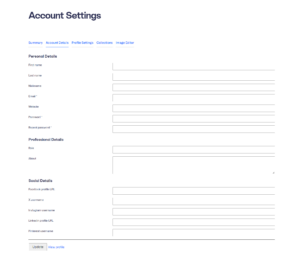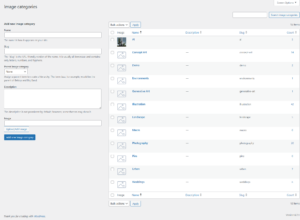If you have ever considered opening an e-commerce store, now is a great time to take action.
In 2020, shoppers spent over $4 trillion online, a 24% increase from the prior year. The e-commerce market now makes up 20% of all purchases. This trend is only going to continue.
With new technologies and an abundance of educational resources, getting into e-commerce is easier than ever before.
In this post, we’ll outline the steps you can take to launch a successful e-commerce store in 2021.
1. Niche and product research
The first step is to perform research to find the market you want to enter. Researching your niche and product in advance helps ensure your business is best positioned for success.
Here are two of the two most effective ways of researching potential ideas:
Keyword research
With keyword research, you analyze the search terms people use in search engines to gauge the demand for a market or product. A simple tool like Google Trends will show you how the interest for a keyword is changing over time.

More robust tools will show you the term’s monthly search volume and average cost-per-click (CPC) when running ad campaigns.
Research products on Amazon
Researching products on Amazon is another way to find profitable product ideas. Products that sell well on Amazon tend to have a strong interest, even if you choose to sell through your own website. You can look through the bestsellers section, or use an Amazon product research tool.
2. Choose a selling method
After you find your niche and product, you’ll want to choose your selling method. There are four common choices for e-commerce merchants:
Drop-shipping
With drop-shipping, you list a supplier’s products on your site without holding the inventory yourself. When a customer places an order, you buy the product from the supplier, and the supplier ships them the item.
Reselling
With the traditional method of retailing, you buy products in bulk at a wholesale price from a supplier. You apply a price markup to the products, sell them to customers, and keep the difference as profit.
Retail arbitrage
With retail arbitrage, you find discrepancies in the price of an item on different marketplaces. You then buy the item from the cheaper store and sell it on the other store, keeping the profit. For example, you see that Item A sells for $10 at Target but $20 on Amazon. You’d buy the product from Target and then sell it on Amazon.
Manufacturing
With manufacturing, you create your own unique products to sell. This could be as intensive as setting up your own facilities and manufacturing the items yourself.
But as a new business owner, you’re more likely to use private label manufacturing. With this method, a manufacturer will make the products for you, which you can then brand and sell as your own.
Each selling method has its advantages and disadvantages. The best choice for you will depend on the particular products you sell and your overall business objectives.
3. Choose a platform for selling
Next, you need to choose your sales channel. In the world of e-commerce, there are two choices; creating your own website or selling through a third-party marketplace. Let’s explore each of these further.
Building your own e-commerce website
Getting your own e-commerce website up and running takes a little more effort, but it is well worth it.
With your own site, you have complete control of branding and the customer experience. You also have total access to your analytics and customer data, and you don’t have to compete with other sellers.
The biggest choice you’ll have to make when setting up your store is what platform to use to build your site.
We recommend using WordPress as it is secure, low-cost and built to scale. It also offers unparalleled flexibility and customization.
If you use WordPress, you’ll also need to choose an e-commerce plugin to manage your store. For this, WooCommerce is the go-to choice, as it powers more e-commerce sites than any other platform in the world.
Marketplaces
There are a number of e-commerce marketplaces you can use to sell your products including Amazon, eBay, and Bonanza, among others.
Unsurprisingly, Amazon presents the best opportunity for new business owners. It has a massive audience, and you can get up and running quickly.
The process is a little different from creating your own site, as you do not have to handle any of the technical elements.
The focus when selling on Amazon lies in optimizing your product listings for conversions and search rankings.

4. Create a business plan and do competitive research
Once you choose your products and sales channels, you’ll want to create your business plan.
When you create a business plan, you get a thorough understanding of the landscape and are prepared for any variables that may arise over the course of your business.
One of the most important areas of your business plan is your competitor analysis. By understanding the competition, you’ll know how to differentiate your store to better stand out to customers.
You don’t need to craft the plan from scratch, as there are plenty of templates available to help get you started.
E-commerce business plans typically follow some variation of the following format:
- Executive summary
- Company description
- Competitive analysis
- Products
- Marketing plan
- Operations plan
- Financial plan
5. Find suppliers
The next step is to find suppliers for your products. You want a supplier who not only offers high-quality products, but is reliable.
This will help you avoid costly issues like defective items or late delivery of your goods.
Here are some common places to find wholesale suppliers:
- Alibaba
- Thomasnet
- WholesaleCentral
- DHGate
Here are some of the best drop-shipping suppliers
- AliExpress (works best if you have an AliExpress drop-shipping app like AliDropship)
- Spocket
- Modalyst
- Wholesale2B
6. Set up order fulfilment processes
Before you start selling, you’ll have to figure out your order fulfilment process. This is an important step as it helps ensure that your customers have a great purchase experience. You want your orders to arrive fast, on time, and without errors.
If you sell through your own e-commerce site, you can choose to deliver your products yourself. This will involve you storing the items, packing them, and taking them to the shipping carrier for delivery.
You also have the option of using a third-party logistics (3PL) service. A 3PL stores your items for you and then ships them to the customer when they place an order.
If you sell through Amazon, you have two similar options:
- Fulfilled By Merchant (FBM): With Amazon FBM, you are responsible for shipping your products. This could be you doing it yourself or using a 3PL.
- Fulfilled by Amazon (FBA): Amazon FBA is essentially a 3PL service. Amazon stores the products for you and handles all shipping and returns.
With FBA, your products are eligible for Amazon Prime and have a better chance of getting exposure. While FBA is great, it isn’t free. This helpful extension allows you to easily calculate the FBA fees for any product, ensuring that you always earn a solid margin on your sales.

7. Promote your products
Now that your logistics are in order, you can begin marketing your business. Here are two of the best ways to get highly targeted visitors to your products:
SEO
With search engine optimization (SEO), your audience will see your products as they are searching on Google or a marketplace like Amazon. Getting your products to rank on any platform requires you to conduct keyword research in advance and then optimize your content.
If you sell through your own e-commerce store, you’ll also need to optimize the technical aspects of your site. Using WordPress can help with this as it offers the best SEO features of any platform.
Advertising
With digital advertising, you use an advertising platform to create campaigns to show your products to a specific group of people. When someone clicks on the ad, you pay the advertising platform.
Popular advertising platforms for e-commerce stores are Google, Facebook, Instagram, and Pinterest.
Amazon also has its own advertising platform you can use to create ads that are displayed on its marketplace.
Conclusion
There is a lot that goes into starting an e-commerce business. This guide has provided you an overview of what you need to take to get moving in the right direction. Follow these steps, take consistent action, and be patient. In time, you will reap the rewards that come from a successful e-commerce business.




